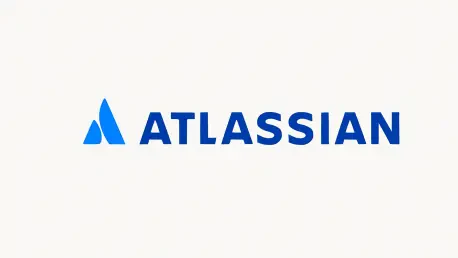Imagine a critical IT system crashing in the middle of a high-stakes project, with downtime costing a company thousands of dollars per minute, and the response team scrambling to identify who should be alerted and how to coordinate a fix. This scenario is all too common in today’s fast-paced digital landscape, where even a brief interruption can have cascading effects on business operations. Atlassian, a leader in enterprise software solutions, has stepped up to address this pressing challenge with two game-changing moves: the acquisition of OpsGenie, a powerful alerting and notification platform, and the launch of Jira Ops, a centralized incident command center. These developments signal a strategic push to enhance incident response for IT operations teams, aiming to slash downtime and prevent future disruptions through advanced tools and seamless integrations. By focusing on speed, accuracy, and coordination, Atlassian is redefining how businesses manage critical incidents in an increasingly complex technological environment.
Strengthening Alerting with OpsGenie
In the realm of IT operations, ensuring that the right people are notified at the right time during a crisis is paramount to minimizing damage and restoring normalcy. OpsGenie, now a key component of Atlassian’s portfolio, stands out as a robust platform designed to manage IT alerts and notifications with precision. It integrates effortlessly with a wide array of monitoring, ticketing, and chat tools, delivering alerts through diverse channels such as email, SMS, push notifications, and even phone calls. Beyond simple alerting, OpsGenie incorporates sophisticated features like on-call scheduling, escalation policies, and rotation management that account for variables like time zones and holidays. This ensures that no critical alert slips through the cracks, regardless of when or where an incident occurs. The platform’s ability to adapt to various operational setups makes it a versatile solution for teams of all sizes, providing a reliable first line of defense against system disruptions and enabling rapid response to emerging issues.
Another significant advantage of OpsGenie lies in its capacity to transform raw data into actionable insights for IT teams striving to refine their incident management processes. By meticulously tracking alert and incident metrics, the platform offers a clear view of performance trends and highlights areas ripe for improvement. This data-driven approach empowers organizations to shift from a reactive stance to a proactive one, anticipating potential issues before they escalate into full-blown crises. Teams can analyze response times, identify recurring problems, and adjust their strategies accordingly, fostering a culture of continuous enhancement. Moreover, the flexibility of OpsGenie’s notification methods ensures that alerts are not only delivered promptly but also tailored to the preferences and availability of individual team members. This level of customization reduces alert fatigue and boosts overall efficiency, positioning OpsGenie as an indispensable tool for modern IT operations seeking to maintain uptime and safeguard business continuity in a competitive digital arena.
Centralizing Coordination with Jira Ops
Complementing the alerting capabilities of OpsGenie, Jira Ops emerges as a unified hub for incident response, streamlining the often chaotic process of managing IT crises. Available through Atlassian’s early access program, this platform integrates seamlessly with popular tools like Slack, Statuspage, and PagerDuty, creating a single point of coordination for teams under pressure. Jira Ops guides responders through structured workflows, automating repetitive tasks such as setting up dedicated communication channels for specific incidents. It also provides real-time visibility into critical details like incident status, severity, and duration, ensuring that everyone involved has access to the most current information. By clearly displaying roles such as the incident manager and technical lead, Jira Ops eliminates confusion during high-stress situations, enabling teams to focus on resolution rather than logistics, and ultimately reducing the time it takes to restore normal operations.
Beyond its role as a coordination tool, Jira Ops addresses the broader need for clarity and accountability in incident management by fostering transparency across all stages of response. The platform’s design ensures that every action taken during an incident is logged and accessible, allowing teams to review their performance and learn from each event. This emphasis on documentation supports post-incident analysis, helping organizations pinpoint weaknesses in their processes and implement corrective measures. Additionally, the integration with collaboration tools means that communication remains fluid, even when team members are dispersed across different locations or time zones. By centralizing these functions, Jira Ops not only accelerates the resolution of current issues but also equips teams with the knowledge to prevent similar disruptions in the future. This comprehensive approach underscores Atlassian’s commitment to building solutions that adapt to the evolving demands of IT operations in a technology-driven world.
Pioneering a Unified Incident Management Ecosystem
The synergy between OpsGenie and Jira Ops reflects a broader vision of creating a cohesive ecosystem where alerting and incident management are not standalone functions but part of an integrated workflow. This strategic alignment ensures that IT teams are not just informed of issues quickly but are also equipped with the context and resources needed to act decisively. OpsGenie’s strength in delivering timely, targeted alerts pairs seamlessly with Jira Ops’ ability to orchestrate response efforts, offering a holistic solution that addresses every facet of incident handling. This combination caters to the diverse dynamics of modern teams, accommodating varied operational environments through flexible integrations and notification options. As businesses increasingly rely on digital infrastructure, Atlassian’s approach highlights the importance of real-time, unified tools in maintaining operational resilience and minimizing the costly impact of downtime on organizational performance.
Looking back, Atlassian’s bold steps in acquiring OpsGenie and rolling out Jira Ops marked a transformative moment in the field of IT incident response. These initiatives demonstrated a clear focus on reducing disruptions through precise alerting and streamlined coordination. For organizations navigating the complexities of modern IT landscapes, the next steps involved exploring how to fully leverage these tools to build more resilient systems. Integrating OpsGenie’s data insights with Jira Ops’ workflow automation offered a pathway to not only react to incidents but also anticipate and prevent them. As teams adapted to these platforms, the emphasis shifted toward customizing configurations to match specific operational needs and fostering a proactive mindset. This evolution in incident management paved the way for stronger, more adaptive IT operations, setting a benchmark for how technology can empower businesses to thrive amidst digital challenges.









